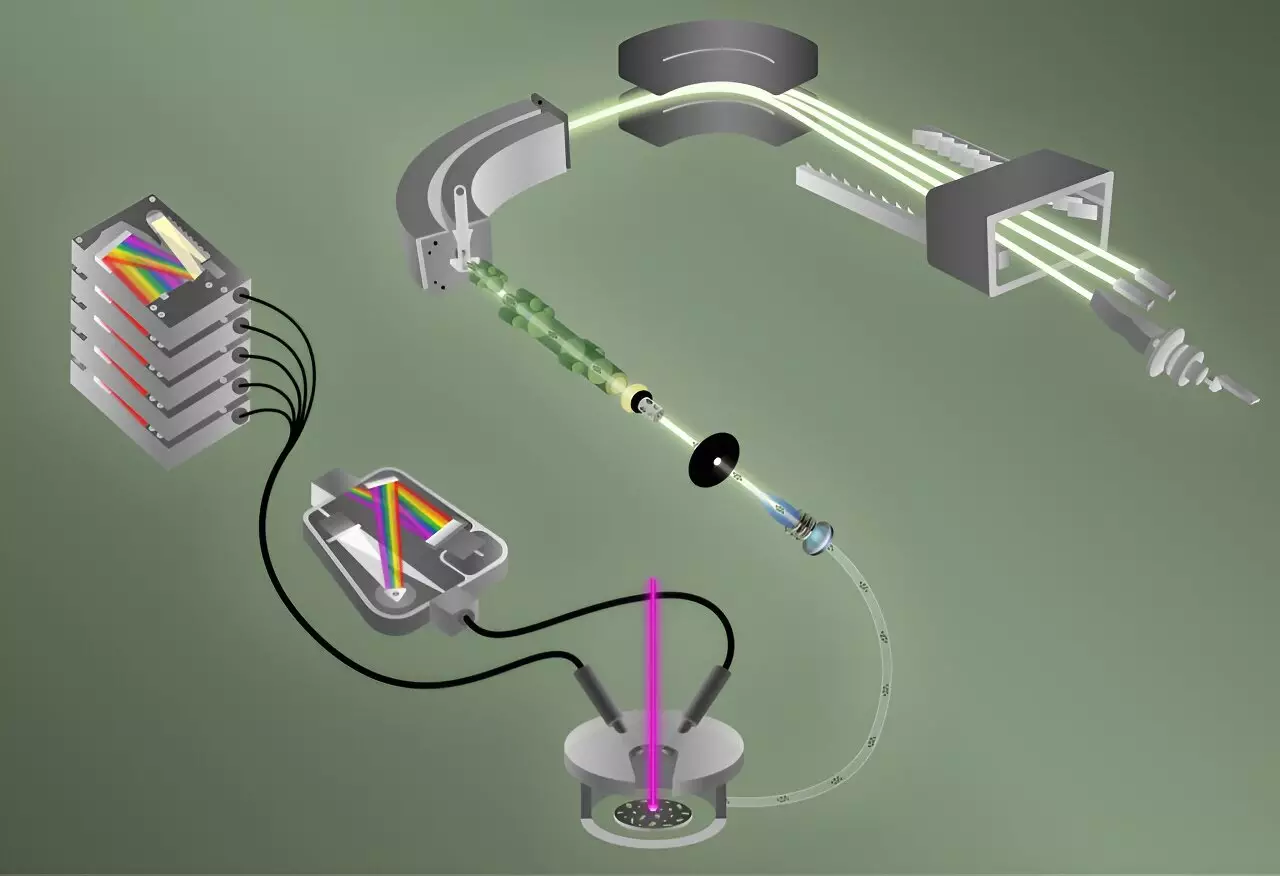Recent innovations in analytical chemistry have unveiled powerful methods to enhance our understanding of nuclear materials. A research team at Oak Ridge National Laboratory (ORNL) has made significant strides in detecting fluorine alongside various uranium isotopes within individual particles. This pioneering work sets a new standard for assessments vital to nuclear security, providing critical insights into where nuclear materials come from and their potential applications.
Fluorine plays a crucial role in the transformation of uranium into an enrichable state, making it a significant focus for nuclear inspectors, especially those working with the International Atomic Energy Agency (IAEA). The simultaneous detection of fluorine and uranium isotopes aids in clarifying the intended use of nuclear material. By establishing isotopic ratios, scientists can glean information pertaining to the processes that produced these particles, along with their age. Benjamin Manard, the lead researcher of the study, emphasized the importance of fast particle characterization in facilitating nuclear material assessments, thus bolstering international nonproliferation efforts.
Innovative Techniques: Merging LIBS and ICP-MS
At the crux of this study is the integration of two advanced analytical techniques: Laser-Induced Breakdown Spectroscopy (LIBS) and Laser Ablation Multicollector Inductively Coupled Plasma Mass Spectrometry (ICP-MS). LIBS proved invaluable for detecting fluorine due to its sensitivity. The technique involves vaporizing a sample and generating plasma, thus allowing the measurement of emitted light to identify elemental composition. As Manard cleverly illustrates, “Different elements emit different colors, or wavelengths,” akin to a fireworks display.
Simultaneously, helium gas transports ions into the ICP-MS, where the isotopic composition of uranium is determined. ICP-MS employs extremely high temperatures to create an environment conducive to analyzing isotopes. By unifying these two approaches, ORNL researchers were able to characterize forty microscopic particles—each comparable in size to a red blood cell—in a mere five minutes.
The capacity to assess fluorine and uranium in a single particle carries substantial implications for nuclear research and security. The presence of uranyl fluoride can signal specific nuclear processes, while the fluorine-to-uranium measurement further illuminates the particle’s origins and the processes that generated it. These insights are crucial for understanding potential nonproliferation concerns.
Brian Ticknor, a co-author of the study, emphasized the dual nature of these analytical tools. While they were developed with national security applications in mind, their utility may extend to diverse fields, including advanced battery manufacturing and environmental studies focused on substances such as microplastics.
The Technical Challenge: Overcoming Elemental Compatibility Issues
Despite the potential of LIBS and ICP-MS, the challenge of jointly using these techniques stemmed from the inherent properties of fluorine. Unlike uranium and many other metals that readily form positive ions, fluorine has a strong tendency to acquire a negative charge. Thus, innovative adaptations were necessary for successful simultaneous analysis.
As both Manard and Ticknor articulated, combining these methods in a multicollector setup marks new ground in particle analysis. The OCR researchers navigated the complexities surrounding the electronegativity of fluorine while still managing to extract valuable information about uranium isotopes.
The research exemplifies the power of collaboration across various scientific disciplines. Manard’s leadership guided a multidisciplinary team that harmonized their expertise to achieve a common goal—enhancing our ability to analyze nuclear materials. The importance of accurate characterization extends beyond nuclear security; there are promising applications for the method in geology, biology, and other chemistry realms.
As the team looks ahead, they express enthusiasm for further refining their techniques. Manard highlighted ambitions to differentiate various types of uranium compounds and extend the methodology to handle other challenging elements, such as chlorine. This adaptability exemplifies the team’s commitment to pushing the boundaries of particle analysis and nuclear material characterization.
The combination of LIBS and ICP-MS by ORNL’s researchers signals a transformative shift in how we interpret nuclear materials. This interdisciplinary advance not only responds to the immediate needs of nuclear security but also opens up pathways for innovation across multiple scientific domains. As researchers continue to refine these techniques, the implications for our understanding of materials—both nuclear and beyond—could prove monumental, heralding a new era of analytical chemistry that promotes safety and scientific discovery.


Leave a Reply